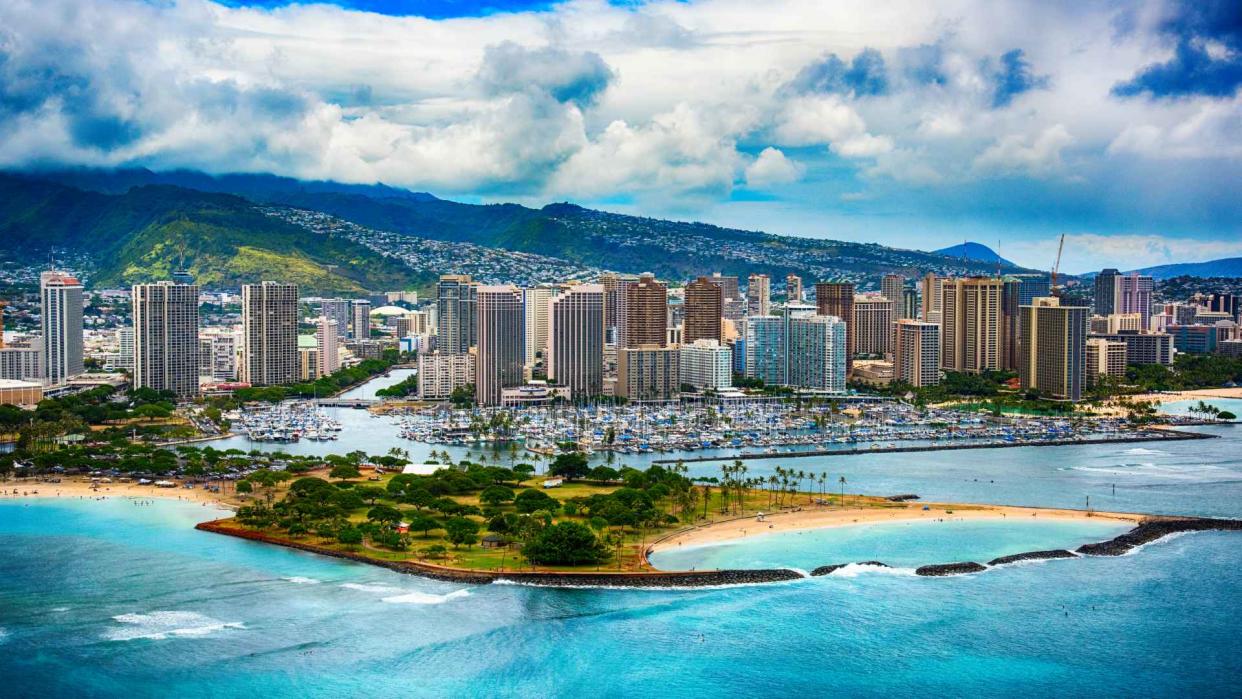Here’s the Salary a Single Person Needs To Live Comfortably in Hawaii

Paradise doesn’t come cheap, as anyone who has ever lived in or visited Hawaii can tell you. While your senses might be overwhelmed by the state’s stunning views, clear blue waters, clean air and fresh seafood, your bank account will be overwhelmed by the cost.
Read This: Hawaii on a Dime: 7 Crucial Tips To Live Frugally in the Aloha State
Up Next: 7 Unusual Ways To Make Extra Money (That Actually Work)
Hawaii ranks among the most expensive states in the nation in just about any category you can name. The Aloha State’s cost of living is the highest in the U.S., according to the Grassroot Institute of Hawaii, a nonprofit policy research group with a libertarian bent. It cited a Tax Foundation analysis which found that the real value of $100 in Hawaii is worth less than $85.
As of 2020, Hawaii’s state budget per capita was the third highest in the nation at $12,896, the Grassroot Institute noted. That total included unfunded state liabilities of roughly $97 billion at the end of 2020.
The average price for a gallon of gasoline in Hawaii is $4.751 as of Oct. 30, 2023, according to AAA. That’s the second highest in the country behind California and over 25% above the national average of $3.494.
Given its high cost of living, it’s not surprising that it takes a very high income to live comfortably in Hawaii.
Check Out: A $150K Income Is ‘Lower Middle Class’ In These High-Cost Cities
GOBankingRates recently surveyed annual living expenses for a single person in each of the 50 states. Researchers used 2021 Consumer Expenditure Survey data (the latest available) for a single person from the U.S. Bureau of Labor Statistics to calculate the annual cost of necessities based on data from the Missouri Economic Research and Information Center’s 2023 Q1 Cost of Living Data Series.
Using that data, researchers doubled the total yearly cost of necessities to determine a living wage that also factors in discretionary spending and savings.
In Hawaii, you need to earn $112,411 a year to make what’s considered a living wage, according to the GBR study. It’s the only state where a six-figure salary is required to live comfortably — and no other state even comes close. Massachusetts ranked second with an annual income of $87,909, followed by California ($80,013), New York ($73,226) and Alaska ($71,570).
In contrast, the state with the lowest required living wage is Mississippi, where you only need to earn $45,906 a year to live comfortably.
Why is Hawaii so expensive? There are a few different reasons, according to experts. The biggest one is its location. Hawaii is comprised of islands stuck way out in the middle of the Pacific Ocean, thousands of miles from the U.S. mainland. This means it costs a lot to ship goods to the state. And because Hawaii has a small land area and unique climate, it can’t produce a lot of agricultural or other goods, the Hawaii Star reported.
The small land area also means there is only so much room for housing, which pushes home prices higher. This problem is not helped by strict land use and zoning regulations. The median cost for a single-family home in Hawaii is more than $1 million, according to the Grassroot Institute, making it the most expensive state in the nation for housing.
Finally, costs in Hawaii are driven higher by the Jones Act, a federal law that regulates U.S. maritime commerce. As the Hawaii Star reported, the law requires that all goods transported between U.S. ports be carried on ships that are built, owned and operated by U.S. companies. It is intended to protect American jobs and promote national security, but it also creates higher shipping costs due to limited competition.
Methodology: GOBankingRates surveyed annual living expenses for a single person in all 50 states, using the 2021 Consumer Expenditure Survey (latest available) data for a single person from the Bureau of Labor Statistics. The itemized costs of living evaluated were housing, groceries, utilities, healthcare and transportation, collectively termed “necessities.” Based on each state’s respective cost of living index for each category, sourced from the Missouri Economic Research and Information Center’s 2023 Q1 Cost of Living Data Series, the study calculated the annual cost of each necessity and summed them up to find total annual expenditure on necessities. Using the 50-30-20 budget rule, which allocates 50% of income for necessities, the study doubled the total annual expenditure on necessities in order to determine the “living wage” for a single person in each state. “Living wage” is defined as the income required to be able to cover 50% necessities, 30% discretionary/luxury spending and 20% for savings. All data was collected on and up to date as of Aug. 15, 2023.
More From GOBankingRates
Suze Orman: 5 Social Security Facts Every Soon-To-Be Retiree Must Know
Here's How to Add $200 to Your Wallet -- Just For Banking Like You Normally Would
The Biggest Mistake People Make With Their Tax Refund -- And How to Avoid It
This article originally appeared on GOBankingRates.com: Here’s the Salary a Single Person Needs To Live Comfortably in Hawaii
